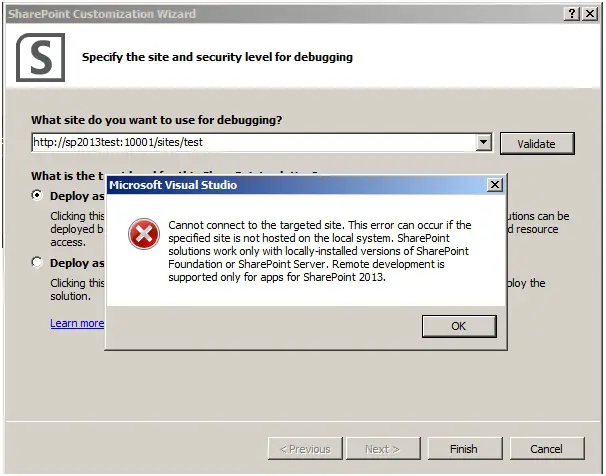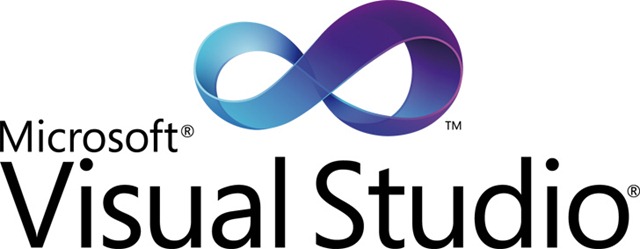
Lately,I’ve been having trouble with Microsoft Visual Studio to connect to the targeted site for debugging.
Whenever I try to connect to the target site, the following error message shows up:

Cannot connect to the targeted site. This error can occur if the specified site is not hosted on the local system. SharePoint solutions work only with locally-installed versions of SharePoint Foundation or SharePoint Server. Remote development is supported only for apps for SharePont 2013.
Is there anyone who can help me solve this problem?
Thanks.
Cannot connect to the targeted site

Hi,
From your description I come to know that you are facing problem to use Microsoft Visual Studio. You want to direct go the specific directory by using use Microsoft Visual Studio. Actually I don’t know which version you are using now.
You can use Microsoft Visual Studio 2010, the latest version.
Here you can do what you want.

Hope your problem will be solved soon.
Thanks
Cannot connect to the targeted site

I suggest you to read the error message carefully. I haven’t worked with SharePoint but still by reading the error message I think I can figure out what’s the problem is.
The error clearly says if the target site is not hosted on the local system you will get the error and remote development is only supported for apps in SharePoint 2013. So if your app is not developed in SharePoint 2013 give a local path for the target site. An example target path would be as follows.
http://localhost:4684/MySite/Login/Account/Login.aspx
4684 is the port number and it’s generated randomly by .NET application. For more information about port numbers see below link
https://www.microsoft.com/en-us/download/details.aspx?id=55984
Localhost id referred to the below path in your computer system
C:inetpubwwwroot















